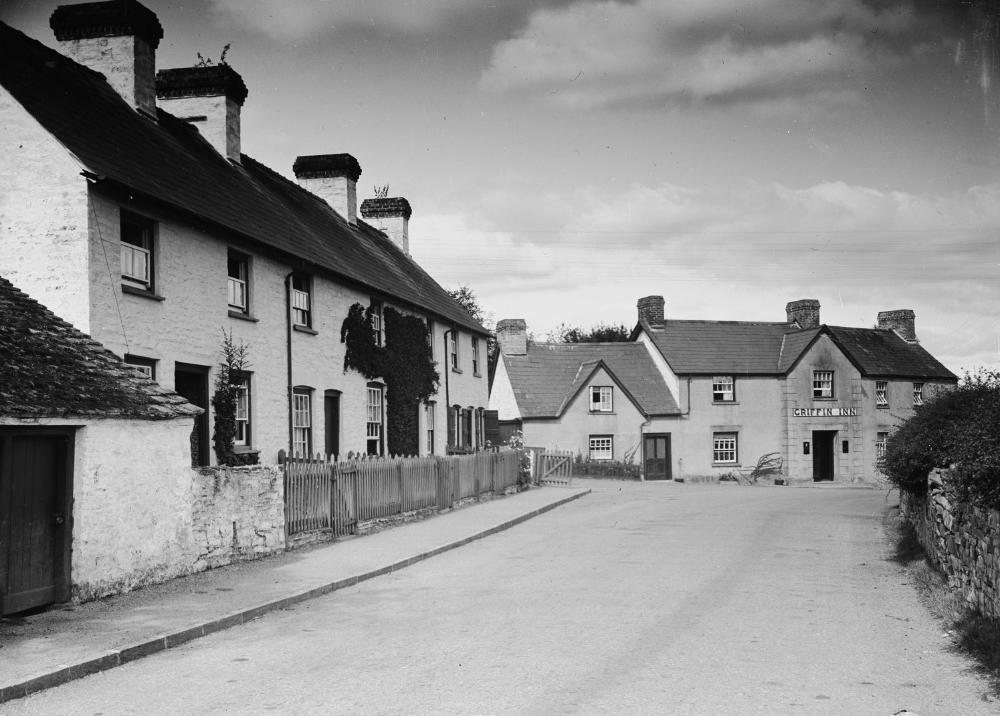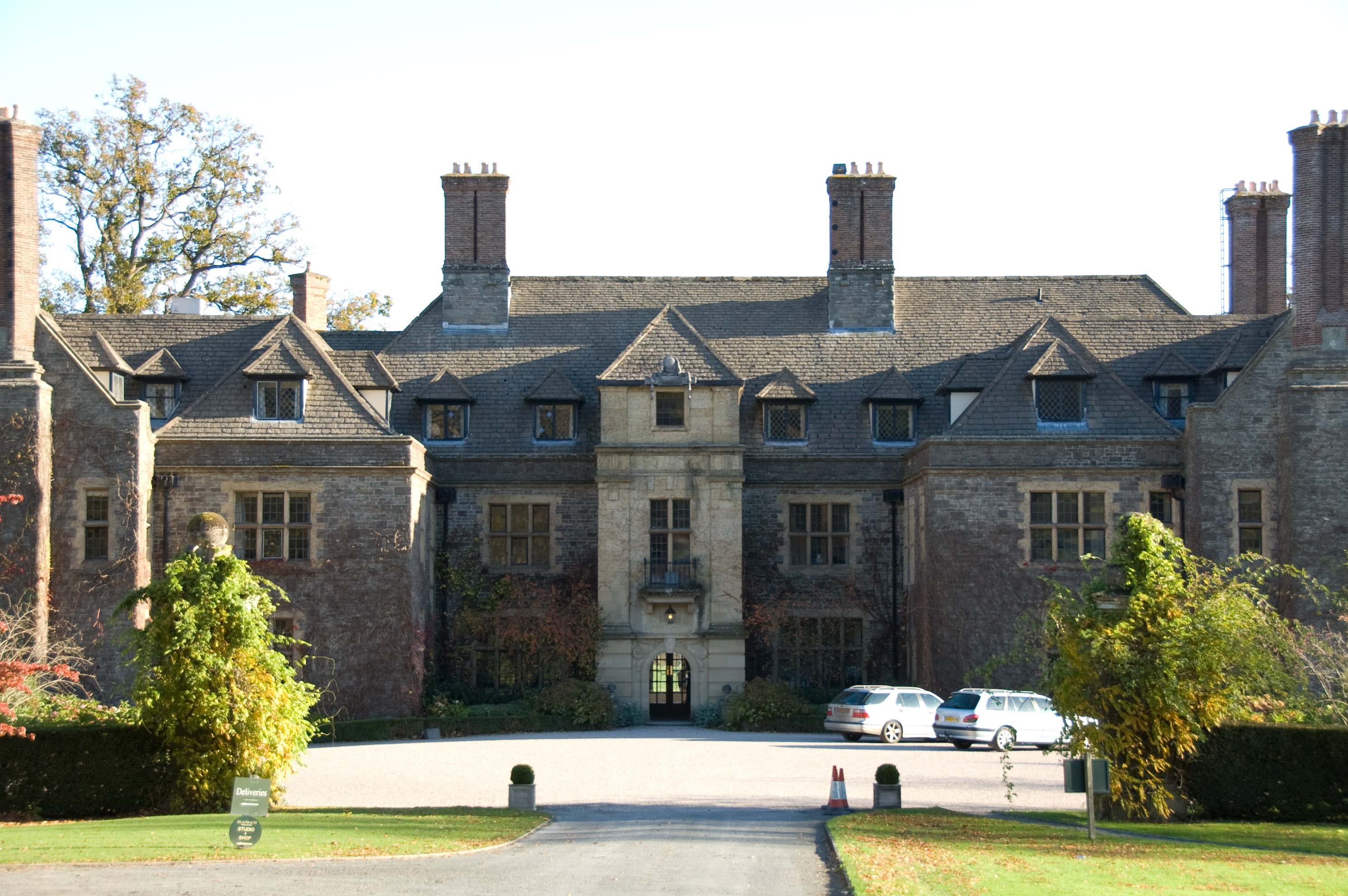Llyswen Vaughn on:
[Wikipedia]
[Google]
[Amazon]
Llyswen is a small village in Powys, Wales on the west bank of the
 The site of the
The site of the 
 Llangoed Hall to the north of the village was built in 1633 by the Williams family of Old Gwernyfed in nearby
Llangoed Hall to the north of the village was built in 1633 by the Williams family of Old Gwernyfed in nearby
Photos of Llyswen and surrounding area on geograph.org.uk
* {{authority control Villages in Powys
River Wye
The River Wye (; cy, Afon Gwy ) is the Longest rivers of the United Kingdom, fourth-longest river in the UK, stretching some from its source on Plynlimon in mid Wales to the Severn estuary. For much of its length the river forms part of Wal ...
. It was formerly within the county of Brecknockshire
, image_flag=
, HQ= Brecon
, Government= Brecknockshire County Council (1889-1974)
, Origin= Brycheiniog
, Status=
, Start= 1535
, End= ...
and now forms part of the Community
A community is a social unit (a group of living things) with commonality such as place, norms, religion, values, customs, or identity. Communities may share a sense of place situated in a given geographical area (e.g. a country, village, tow ...
of Bronllys
Bronllys is a village and community in Powys, Wales between the nearby towns Brecon and Talgarth. Bronllys is also the name of an electoral ward to Powys County Council. The community includes Llyswen.
Description
The village is in the historic ...
. The nearest town is Brecon
Brecon (; cy, Aberhonddu; ), archaically known as Brecknock, is a market town in Powys, mid Wales. In 1841, it had a population of 5,701. The population in 2001 was 7,901, increasing to 8,250 at the 2011 census. Historically it was the coun ...
approximately to the south-west.
History
'Llys-wen' isWelsh
Welsh may refer to:
Related to Wales
* Welsh, referring or related to Wales
* Welsh language, a Brittonic Celtic language spoken in Wales
* Welsh people
People
* Welsh (surname)
* Sometimes used as a synonym for the ancient Britons (Celtic peop ...
for "The White Court" and the settlement is first mentioned as a site of a court where the sons of Rhodri Mawr
Rhodri ap Merfyn ( 820 – 873/877/878), popularly known as Rhodri the Great ( cy, Rhodri Mawr), succeeded his father, Merfyn Frych, as King of Kingdom of Gwynedd, Gwynedd in 844. Rhodri annexed Kingdom of Powys, Powys c. 856 and Seisyllwg c. 8 ...
, ninth century King of the Britons, might arbitrate their differences. It has been suggested that the remains of a hill fort
A hillfort is a type of earthwork used as a fortified refuge or defended settlement, located to exploit a rise in elevation for defensive advantage. They are typically European and of the Bronze Age or Iron Age. Some were used in the post-Roma ...
above the village might be the location of this court.
Parish Church
 The site of the
The site of the parish church
A parish church (or parochial church) in Christianity is the church which acts as the religious centre of a parish. In many parts of the world, especially in rural areas, the parish church may play a significant role in community activities, ...
may be of equal age or older. It is dedicated to St Gwendoline, one of the many saintly offspring of King Brychan
Brychan Brycheiniog was a legendary 5th-century king of Brycheiniog (Brecknockshire, alternatively Breconshire) in Mid Wales.
Life
According to Celtic hagiography Brychan was born in Ireland, the son of a Prince Anlach, son of Coronac, and h ...
of Brycheiniog
Brycheiniog was an independent kingdom in South Wales in the Early Middle Ages. It often acted as a buffer state between England to the east and the south Welsh kingdom of Deheubarth to the west. It was conquered and pacified by the Normans be ...
, who is said to have been killed by pagan Saxons
The Saxons ( la, Saxones, german: Sachsen, ang, Seaxan, osx, Sahson, nds, Sassen, nl, Saksen) were a group of Germanic
*
*
*
*
peoples whose name was given in the early Middle Ages to a large country (Old Saxony, la, Saxonia) near the Nor ...
and buried in nearby Talgarth
Talgarth is a market town, community and electoral ward in southern Powys, Mid Wales, about north of Crickhowell, north-east of Brecon and south-east of Builth Wells. Notable buildings in the town include the 14th-century parish church and a ...
. Unfortunately the church was destroyed and rebuilt in 1862 and only the Norman
Norman or Normans may refer to:
Ethnic and cultural identity
* The Normans, a people partly descended from Norse Vikings who settled in the territory of Normandy in France in the 10th and 11th centuries
** People or things connected with the Norm ...
font remains. Unusually, this destruction (common in the Victorian period) drew adverse comment at the time. A contemporary editorial in Archaeologia Cambrensis said: "We are sorry to hear that this ancient edifice has been pulled down...We have no right...to remove the handiwork of our forefathers...It would be better to let the old buildings, plain or ugly as they may be, pass down unscathed to our children, who will have more respect for them than is shewn by ourselves."

Llyswen Castle
Following the Norman invasion of Wales, Llyswen became subject to theMarcher Lords
A Marcher lord () was a noble appointed by the king of England to guard the border (known as the Welsh Marches) between England and Wales.
A Marcher lord was the English equivalent of a margrave (in the Holy Roman Empire) or a marquis (in Fra ...
and in the 12th century formed part of the lands of Walter de Clifford. Most villages in the area were fortified with a motte-and-bailey
A motte-and-bailey castle is a European fortification with a wooden or stone keep situated on a raised area of ground called a motte, accompanied by a walled courtyard, or bailey, surrounded by a protective ditch and palisade. Relatively easy to ...
castle and a possible site for Llyswen Castle has been identified, though no supporting documentary evidence exists.
Llangoed Hall
 Llangoed Hall to the north of the village was built in 1633 by the Williams family of Old Gwernyfed in nearby
Llangoed Hall to the north of the village was built in 1633 by the Williams family of Old Gwernyfed in nearby Aberllynfi
Three Cocks or () is a village near Glasbury in Powys, Wales. The Welsh name refers to the mouth of the Afon Llynfi which enters the River Wye a mile from the village. The nearest town is Hay-on-Wye some 5 miles (8.5 km) to the North East ...
. It was lost to the MacNamara family (apparently after a game of cards) in about 1800 and subsequently much rebuilt. A London hatter called Archibald Christy bought the house in about 1860 and later had it extensively redesigned by the architect Clough Williams-Ellis, who formed the romantic notion that it was the site of the original 'White Court'. In 1987 the house was bought and much restored in Edwardian
The Edwardian era or Edwardian period of British history spanned the reign of King Edward VII, 1901 to 1910 and is sometimes extended to the start of the First World War. The death of Queen Victoria in January 1901 marked the end of the Victori ...
style by Sir Bernard Ashley
Sir Bernard Albert Ashley (11 August 1926 – 14 February 2009) was an English businessman and engineer. He was the husband of Laura Ashley, and was her business partner from the founding of their fashion-textiles-centred business.
An enginee ...
, who subsequently opened it as the Llangoed Hall
Llangoed Hall is a country house hotel, near the village of Llyswen, in Powys, Mid Wales. It is known for its decoration in Laura Ashley fabrics and styles, and was owned by Sir Bernard Ashley, the widower of the designer. It is a Grade II* l ...
Hotel and fabric design centre. It is now a grade II* listed
In the United Kingdom, a listed building or listed structure is one that has been placed on one of the four statutory lists maintained by Historic England in England, Historic Environment Scotland in Scotland, in Wales, and the Northern Irel ...
building.
The Hermit of Llyswen
The romantic radical and poet John Thelwall built himself a "hermitage" at Llyswen Farm during his exile in Wales. His friendsWilliam
William is a male given name of Germanic origin.Hanks, Hardcastle and Hodges, ''Oxford Dictionary of First Names'', Oxford University Press, 2nd edition, , p. 276. It became very popular in the English language after the Norman conquest of Engl ...
and Dorothy Wordsworth and Samuel Taylor Coleridge
Samuel Taylor Coleridge (; 21 October 177225 July 1834) was an English poet, literary critic, philosopher, and theologian who, with his friend William Wordsworth, was a founder of the Romantic Movement in England and a member of the Lake Poe ...
visited him there in August 1798. The figure of "The Solitary" from Wordsworth's later poem 'The Excursion' may have been based on Thelwall in Llyswen.
Today
A travel guide of 1847 referred to Llyswen as a "miserable village". Things have apparently improved since then. In 2008, Llyswen was judged one of the top ten most desirable British villages in which to live.Notes
External links
Photos of Llyswen and surrounding area on geograph.org.uk
* {{authority control Villages in Powys